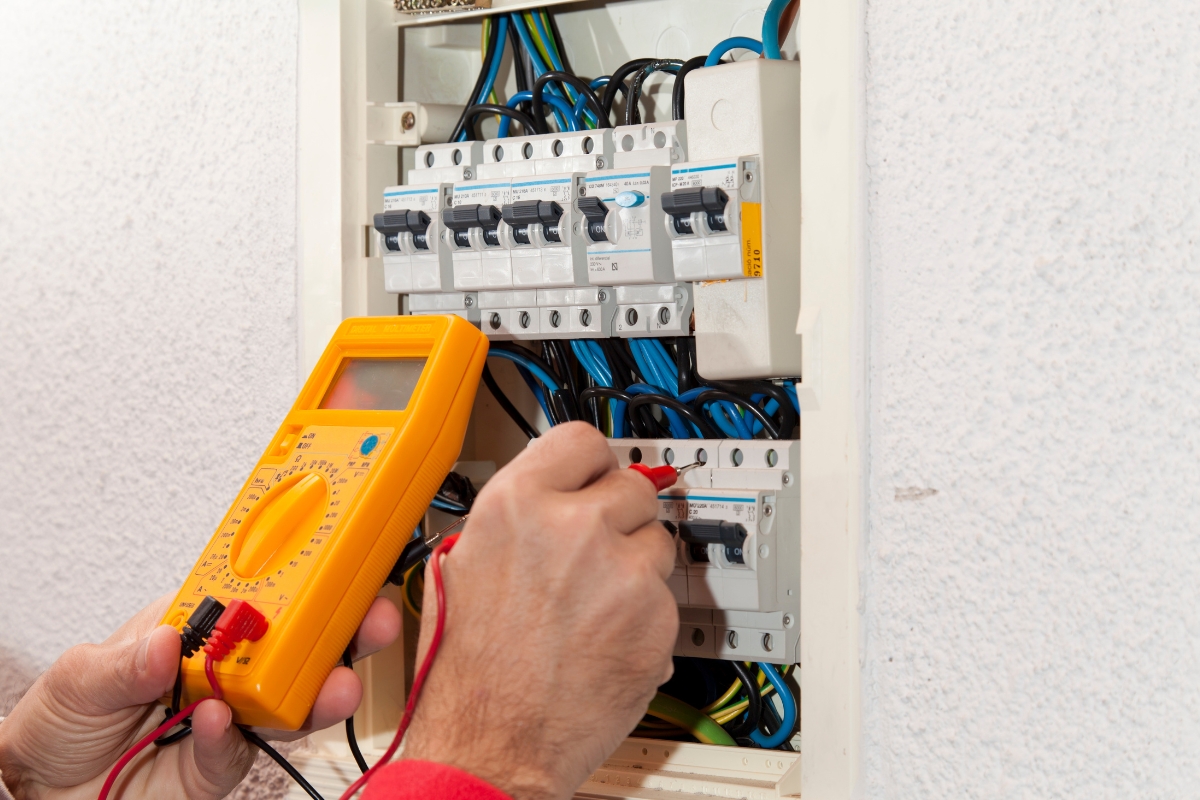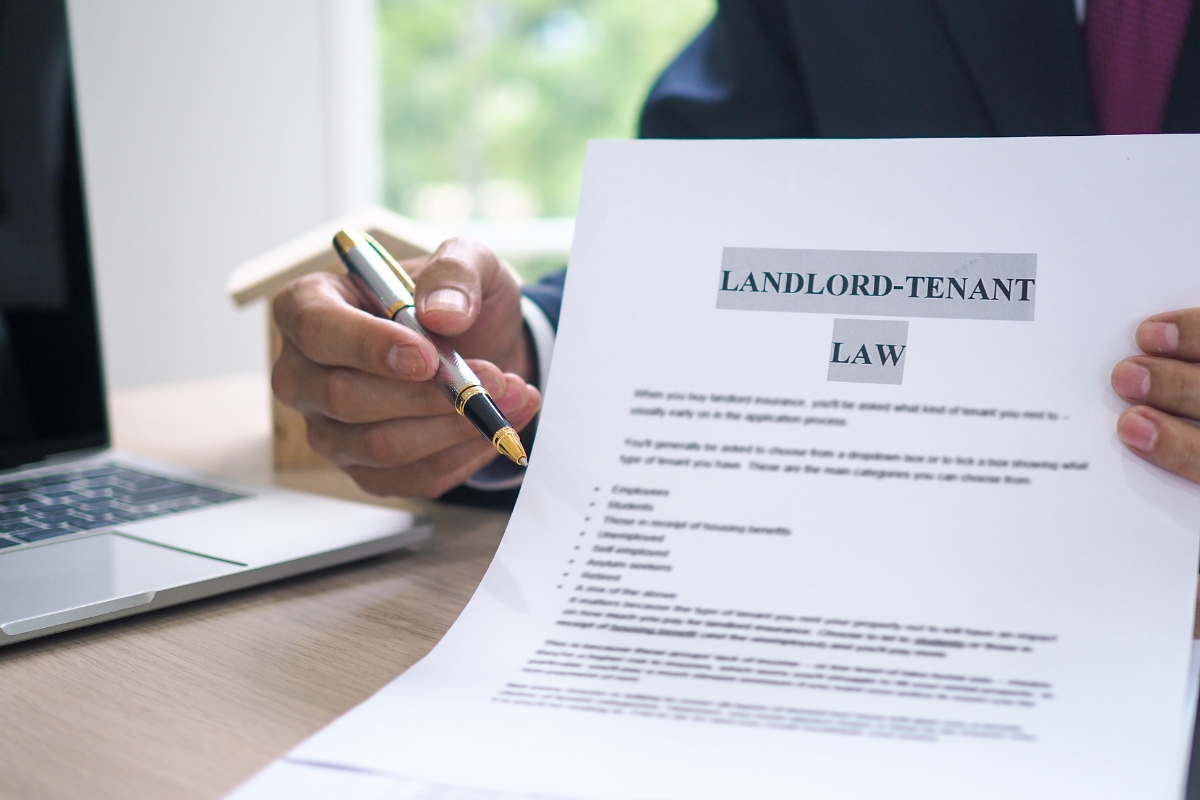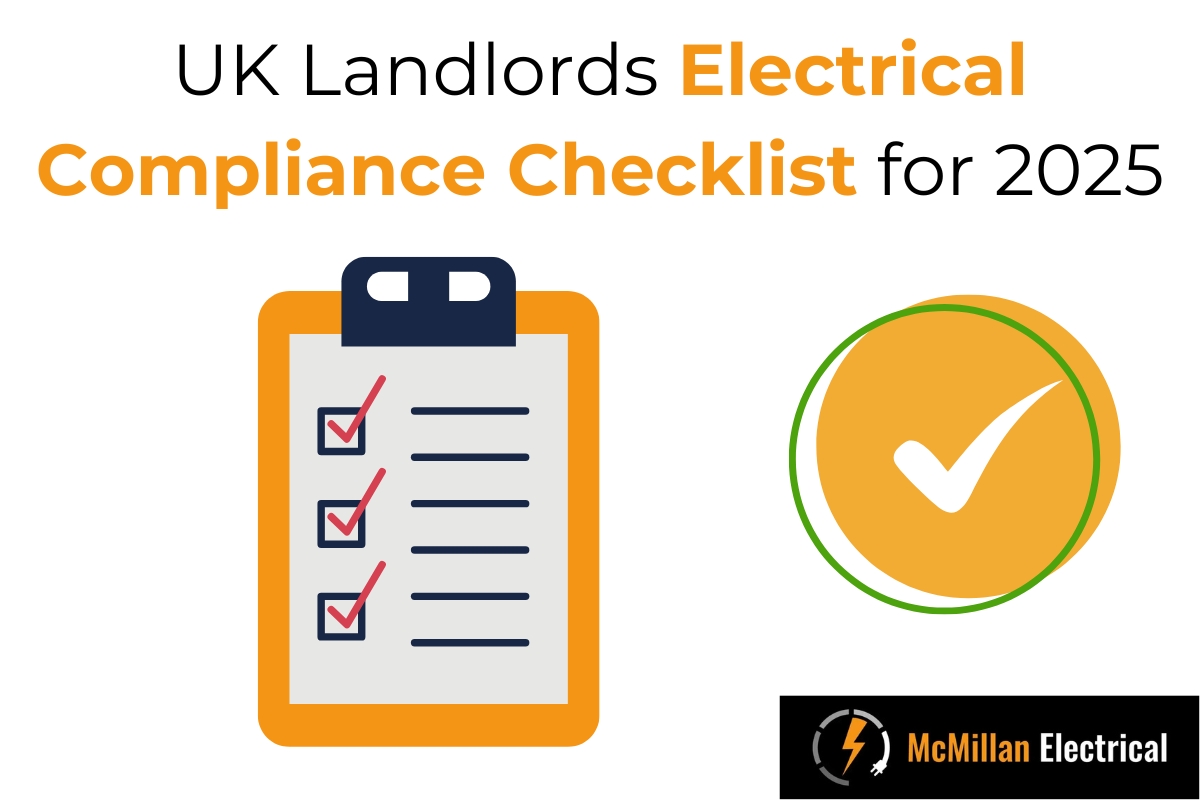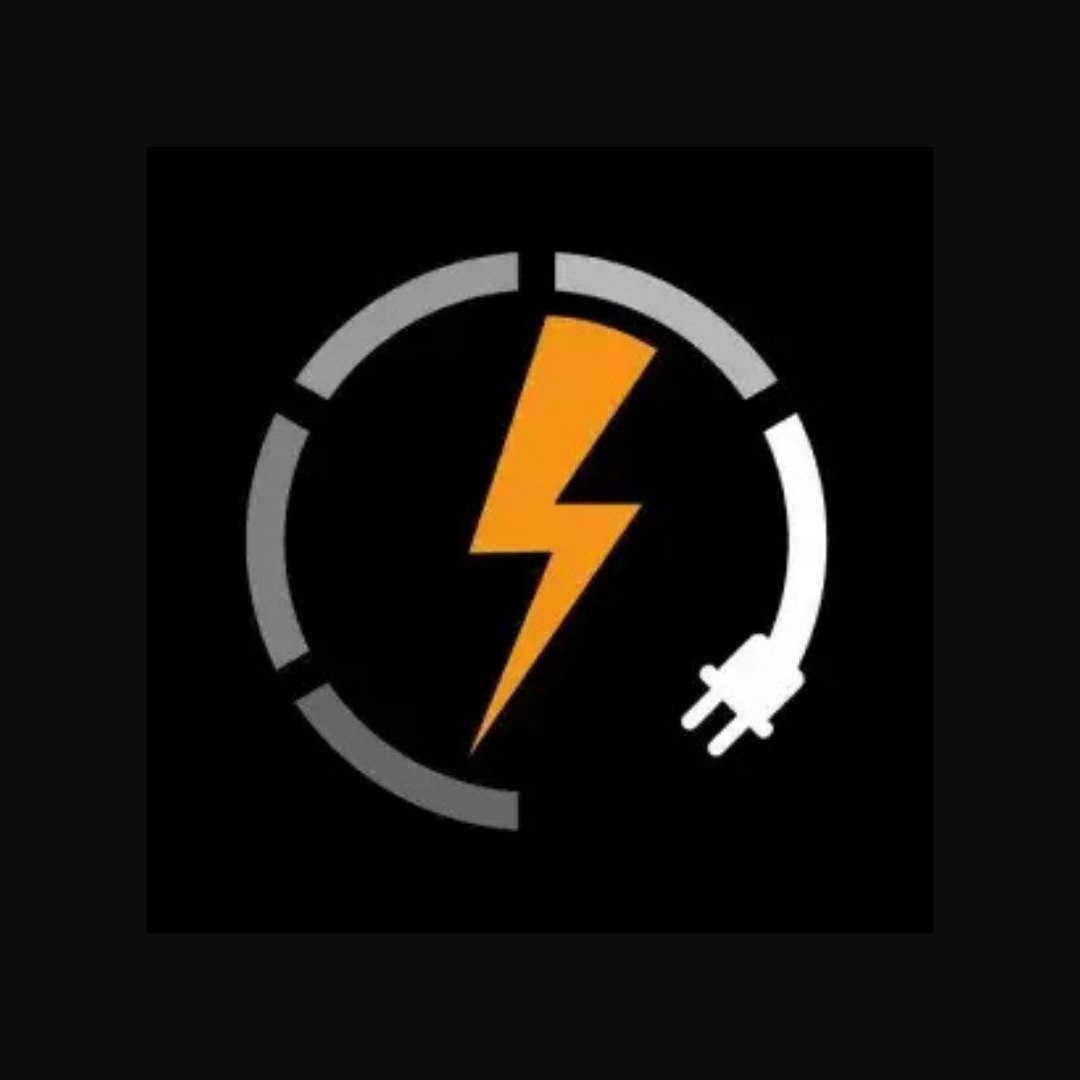
UK Landlord Electrical Compliance Checklist for 2025: Ensuring Safety and Avoiding Penalties
Electrical Compliance Checklist for UK Landlords in 2025
For Landlords in the UK
Your legal requirement is the safety of your tenants and the compliance of your rental properties with the latest regulations. The landscape of landlord responsibilities, especially concerning electrical safety, has evolved, necessitating a thorough understanding and adherence to avoid penalties and ensure tenant safety.
This guide aims to equip you with the essential checklist for electrical compliance in 2025, focusing on the updated requirements and best practices to maintain your properties safely and ensure legal tenancy agreements.
Introduction to the 2025 Compliance Requirements for UK Landlords
Compliance with electrical safety standards is not just advisable—it’s a legal requirement for UK landlords. The consequences of failure to comply can be severe, including potential fines of up to £30,000.
The 2025 compliance requirements are designed to:
Enhance tenant safety
Protect landlords from potential legal issues
Understanding these requirements is the first step towards ensuring your properties meet the necessary electrical safety checks and standards.
Overview of the Updated Electrical Safety Standards
The updated electrical safety standards, as outlined in the 18th edition, emphasize the need for landlords to have their electrical installations inspected at regular intervals, specifically every five years.
This ensures that:
All electrical systems within a property are safe and up to code
Potential fire hazards and tenant safety risks are mitigated
Adhering to these standards is crucial for maintaining the safety and integrity of your rental properties and ensuring they meet legal standards.
Key Dates and Transition Periods for Landlords in the UK
For landlords across the UK, it’s essential to mark your calendars with the key dates and transition periods related to electrical safety compliance.
These timelines are vital for:
Planning inspections, updates, and repairs
Ensuring you meet the updated standards
Avoiding penalties and maintaining compliant rental properties
Staying informed and prepared will help you keep your properties safe and legally compliant.
Understanding Electrical Safety Inspections (EICR)
Electrical Installation Condition Reports (EICRs) are at the heart of ensuring your rental properties are electrically safe.
An EICR inspection assesses the condition of a property’s electrical installations, identifying any:
Defects
Necessary improvements to meet current safety standards
An EICR is mandatory every five years but may be required more frequently depending on the property’s condition and usage.
What Constitutes an EICR?
An EICR involves a thorough check of all electrical installations within a property to ensure they are safe and well-maintained.
If a complete rewiring is carried out, landlords receive an Electrical Installation Certificate (EIC), which serves a similar purpose for the first five years.
The EIC or subsequent EICR should be provided to tenants and local authorities, if requested, to prove compliance.
Prospective tenants must be provided with a valid EICR within 28 days of moving in to ensure compliance with electrical safety regulations.
Non-compliance can result in fines for UK landlords.

Visual Inspection and Testing of Electrical Circuits
Detecting potential hazards early is vital, which is why visual inspections and testing of electrical circuits form a crucial part of the EICR process.
This helps:
Identify obvious faults
Assess the overall safety of the electrical installations in your rental property
Classification of Electrical Faults and Detailed Reporting
Following the inspection, the EICR will classify electrical faults and provide a detailed report.
This document is essential for:
Understanding the electrical safety measures your property meets
Knowing what actions may be required to address any identified issues
Ensuring the safety of tenants and compliance with regulatory requirements
The Importance of Regular Electrical Safety Checks
Regular electrical safety checks are non-negotiable for landlords in the UK.
These inspections include:
Visual checks
Detailed assessments by qualified professionals
They help identify potential hazards such as:
Defective plug sockets
Outdated consumer units
By ensuring your electrical installations meet the latest safety standards in the private rented sector, you can mitigate risks and avoid financial penalties or remedial notices.
Benefits of Proactive Electrical Maintenance in Rental Properties
For landlords in England, proactive electrical maintenance offers numerous benefits, including:
Enhanced tenant safety
Prevention of costly emergency repairs
Compliance with legal requirements
Regular electrical safety checks are a cornerstone of responsible property management, helping to maintain the value and integrity of your rental properties.

Legal Requirements and Regulations
Meeting the legal requirements for electrical safety is fundamental for landlords. Not only does compliance protect your tenants, but it also shields you from potential fines and legal action. Staying abreast of and adhering to these legal obligations is essential for successful property management in the UK.
The Electrical Safety Standards in the Private Rented Sector (England) Regulations 2020
The Electrical Safety Standards in the Private Rented Sector (England) Regulations 2020 underline the necessity for landlords to ensure their electrical installations are inspected and tested by a qualified and competent person at least every five years. Compliance with these standards is evidenced by receiving a valid Electrical Safety Certificate, crucial for both tenant safety and regulatory adherence.
Mandatory Requirements for Landlords in England
Landlords in England must understand and fulfill the mandatory requirements set out in the Electrical Safety Standards in the Private Rented Sector (England) Regulations 2020. This includes ensuring all electrical installations in their rental properties are inspected and tested at prescribed intervals and that any necessary repairs or improvements are carried out promptly to meet the specified safety standards.
Electrical Regulations for Properties in Wales and Scotland
While the Electrical Safety Standards in the Private Rented Sector (England) Regulations 2020 apply specifically to England, rental properties in Wales and Scotland have their own sets of requirements to ensure their properties are safe. Landlords operating in these regions must be familiar with the respective regulations to ensure compliance and tenant safety.
Differences and Similarities in Regional Compliance
Understanding the differences and similarities in regional compliance standards is crucial for landlords operating across the UK. While the overarching goal is tenant safety, specific requirements may vary. Staying informed and adhering to these standards ensures that all your rental properties, regardless of location, are safe and compliant.
Preparing for an EICR: Landlord's Guide
Preparing your property for an Electrical Installation Condition Report (EICR) is a crucial step in maintaining electrical safety and compliance. By ensuring your property is ready for inspection, you not only facilitate a smoother assessment process but also avoid potential delays and re-inspections. This guide outlines key preparation steps for landlords, emphasizing the importance of electrical safety and the role of EICR in achieving it.
How to Prepare Your Property for a Domestic EICR
To get your property ready for a domestic EICR inspection, start by the property's electrical system easily accessible. This means clearing any obstructions around plug sockets, switches, and ensuring the fuse box is readily approachable. Inspectors must examine these elements closely, and any hindrance can compromise the thoroughness of the inspection. Additionally, ensure areas like lofts, basements, and cupboards, which might house parts of the electrical system, are unlocked and accessible. Informing tenants well in advance about the scheduled inspection will help minimize disruptions and ensure their cooperation, making the process efficient for everyone involved.
Preparation Tips for Commercial Property Electrical Inspections
When prepping for an electrical inspection in a commercial property, it's essential to adhere to the latest electrical safety standards, including the 18th edition of the Wiring Regulations. Even if your property's electrical installations were compliant with earlier standards, a check against the current regulations is crucial. This does not imply that installations compliant with previous editions are unsafe, but staying updated with the latest standards is good practice. Ensure the electrical system is inspected and tested at least every five years, and keep all documentation up-to-date to avoid unnecessary penalties for non-compliance.
Addressing Common Electrical Issues
Addressing common electrical issues before they escalate is key to ensuring the safety and longevity of your property's electrical installations. From outdated consumer units to faulty wiring and worn-out light fittings, various problems can affect the efficiency and safety of your electrical system. Regular maintenance and timely repairs are essential in preventing these issues from becoming potential fire hazards. Ensuring your property undergoes an EICR at recommended intervals helps identify and rectify these common faults, safeguarding against potential dangers and ensuring compliance with landlord electrical safety regulations.
Identifying and Rectifying Common Electrical Faults
If an EICR identifies electrical faults within your property, taking swift action is non-negotiable. You have a 28-day window, or shorter if specified, to address these issues. Once remedial work is completed, it's imperative to obtain written confirmation from a qualified professional that your property now meets the required electrical safety standards. This documentation, along with any details of further necessary work, must be shared with tenants and, if required, your local council within 28 days of completion. This cycle repeats until full compliance is achieved, ensuring the safety and integrity of your property's electrical installations.
The Role of RCD Devices in Enhancing Safety
For property managers, understanding the role of Residual Current Devices (RCDs) in enhancing electrical safety is pivotal. Since the 1st April 2021, regulations have stressed the importance of RCD protection in rental properties. RCDs provide a critical safety layer by instantly cutting off the electricity supply in the event of a fault, significantly reducing the risk of electric shock or fire. Incorporating RCDs into your property’s electrical system is a proactive step towards ensuring tenant safety and regulatory compliance, a responsibility shared by landlords and lettings agents alike.
When to Consider Replacing the Consumer Unit
Considering the replacement of the consumer unit, or fuse box, is essential when it no longer meets current electrical regulations or fails to support the property’s electrical system efficiently. The consumer unit is the heart of your property's electrical system, and its ability to function correctly is paramount for safety. Upgrading to a modern consumer unit, designed to comply with the latest electrical regulations, enhances protection against electrical faults and fires. Such updates are crucial in maintaining the safety and compliance of your property's electrical infrastructure.

The EICR Process: What Landlords Need to Know
Understanding the EICR process is fundamental for landlords, lettings agents, and property managers. The Electrical Safety Standards in the Private Rented Sector (England) Regulations 2020 set a compliance deadline of 1st April 2021, mandating regular electrical inspections and testing. These regulations aim to ensure that all electrical installations in rented properties are safe for tenants at the beginning of and during their tenancy. Familiarizing yourself with the requirements and ensuring your properties comply is essential to avoid penalties and tenant issues.
Visual Inspection and Circuit Testing Phases
The EICR process commences with a comprehensive visual inspection of the property's electrical system. This initial phase involves checking light fittings, plug sockets, and electrical appliances for signs of damage or wear. The consumer unit is also scrutinized to ensure it is up to date. Following the visual assessment, circuit testing is conducted to identify less apparent defects. This two-phased approach ensures a thorough evaluation of the property’s electrical safety, highlighting areas that require attention.
Detailed Report: Understanding the Findings of an Electrical Safety Certificate
Upon completion of the EICR(electrical installation condition report), outlining the findings of the inspection. Understanding this report is crucial for landlords, as it categorizes electrical faults based on their severity and details recommended actions. The report not only serves as a record of your property’s electrical condition but also guides the necessary remedial works to meet electrical safety standards, make sure to request a copy of the report, carried out by a competent person that is qualified and registered with NICEIC or NAPIT. Addressing the findings promptly ensures your property remains safe for tenants and compliant with the latest regulations, ultimately protecting you from potential legal and financial repercussions.
Remedial Work and Certification: Completing the Compliance Cycle
After your property undergoes an electrical inspection, completing any remedial work is essential to meet the latest standards. If the Electrical Installation Condition Report (EICR) identifies issues, addressing these promptly ensures the safety of your tenants and the compliance of your property. Once the necessary corrections are made, obtaining certification verifies that your property adheres to the required safety norms, closing the compliance loop and protecting you from potential penalties.
Financial Considerations and Penalties
Failure to comply with electrical safety standards can lead to significant financial penalties, with fines up to £30,000 per breach. This underscores the financial implications of non-compliance, not just in terms of penalties but also the potential for increased insurance premiums and the risk of legal action from tenants. It's a stark reminder for landlords to ensure their properties are always up to safety requirements.
Can Tenants Move In If Remedial Work Is Needed?
If an EICR report deems the electrics in your property unsatisfactory, it's imperative to complete the required remedial work within 28 days, ideally before a new tenant moves in. Moving tenants into a property with known electrical safety issues not only puts them at risk of injury but also exposes you, the landlord, to potential liability. Prioritising these repairs is fundamental for tenant safety and regulatory compliance.
Exemptions and Special Cases
While most tenancies require adherence to electrical safety regulations, there are exemptions. Properties excluded include those with a long lease of 7 years or more, student accommodations, and situations where the landlord is a private registered provider of social housing. Understanding these exemptions can help landlords navigate their responsibilities more effectively.
Properties Excluded from Mandatory Electrical Safety Inspections
Several types of properties are exempt from mandatory electrical safety inspections. These include accommodations shared with landlords, social housing provided by registered private providers, and long-lease tenancies, among others. Being aware of these exemptions allows landlords to understand where their properties stand in terms of compliance requirements.
Special Considerations for New Builds and Rewired Properties
New builds and properties that have recently undergone a complete rewiring are subject to specific considerations. Landlords should be issued an Electrical Installation Certificate (EIC) for such work, which they must provide to both tenants and local authorities if requested. This certification confirms the safety of the new installations and starts the countdown to the next required follow-up inspections, typically five years later, ensuring ongoing compliance and safety requirements.
Ensuring Compliance: A Step-by-Step Guide for Landlords in the UK
Staying compliant with electrical safety standards is a continuous process that requires diligence and awareness of current regulations. By routinely scheduling Electrical Installation Condition Reports (EICR), addressing any identified issues promptly, and keeping accurate records, landlords can ensure their properties remain safe and legally compliant, avoiding penalties for non-compliance and ensuring tenant health and safety.
Selecting a Qualified Electrician for EICRs
Choosing the right electrician for your EICR is critical. Landlords should prioritize professionals affiliated with reputable organizations like NICEIC or NAPIT to ensure they are part of a competent person scheme. McMillan Electrical, an NICEIC Approved Contractor, offers trusted, high-quality inspections and services to help landlords stay compliant and protect their tenants.
Ready to Book Your EICR?
Don’t wait until it’s too late. Contact McMillan Electrical today to schedule your EICR inspection and ensure your rental properties meet the 2025 compliance standards.

Documenting and Keeping Records of Electrical Safety Checks
Documenting and keeping records of electrical safety checks is not just a regulatory requirement; it's also a best practice that can protect landlords in the event of a dispute and to prevent legal action from tenants. These records should include details of the inspection, any faults found, the remedial actions taken, and follow-up inspections. This diligence ensures landlords in England and Wales remain compliant and can provide evidence of their efforts to maintain electrical safety standards, thereby mitigating the risk of fines for non-compliance.
UK Landlords Electrical Compliance Checklist for 2025
Obtain and Maintain an EICR Certificate
Schedule an Electrical Installation Condition Report (EICR) every five years or at the start of a new tenancy, contact McMillan Electrical here to obtain one.
Ensure inspections are carried out by a qualified, NICEIC-registered electrician.
Address any safety issues identified in the report, such as immediate dangers or potential risks.
Conduct Regular Electrical Safety Inspections
Perform inspections regularly, with increased frequency for older properties or those with higher tenant turnover.
Include wiring, plug sockets, switches, and fixed electrical appliances in the inspection.
Keep detailed records of all inspections and repairs.
Perform Portable Appliance Testing (PAT)
Test all portable electrical appliances, at least annually.
Record the results and share them with tenants if requested.
Stay Updated on New Regulations
Monitor updates to electrical safety regulations for landlords in 2025.
Adjust property management practices to align with any changes in compliance requirements.
Provide Tenants with Necessary Documentation
Supply a copy of the EICR to new tenants before they move in.
Maintain an accessible archive of all safety certificates and inspection records.
Address Electrical Maintenance Promptly
Respond quickly to tenant concerns reported defective electrical issues such as flickering lights or power outages.
Conduct visual checks of electrical installations during routine property inspections.
Budget for Compliance
Include the costs of EICRs, PAT testing, and any potential repairs in the annual property budget.
Research affordable yet qualified and registered electricians to minimize costs without compromising quality.
Be Vigilant About Common Risks
Look out for damaged wiring, overloaded circuits, and other visible hazards.
Take proactive steps at regular intervals to address issues before they pose risks to tenants or the property.
Educate Tenants About Electrical Safety
Inform tenants about safe electrical practices, such as not overloading sockets to avoid potential hazards and risk of injury.
Ensure they know how to report issues of the property's electrical system and where to locate the fuse box in case of emergencies.
Conduct an Annual Compliance Review
Use this checklist annually to verify that your property meets all electrical safety requirements.
Consult professionals for advice if any compliance questions arise or tenant concerns.
By following this checklist, landlords can ensure compliance with 2025 UK regulations, maintain safe rental properties, and avoid costly fines for non-compliance or legal action from tenants.
FAQs: Addressing Landlords' Common Concerns
Landlords often have questions about electrical safety regulations and best practices. Addressing these FAQs is essential for ensuring that landlords understand their obligations, the importance of compliance, and how to effectively manage their properties to keep tenants safe and avoid penalties.
How Often Should EICRs Be Carried Out?
For rental properties, it's recommended that an Electrical Installation Condition Report (EICR) be carried out every five years by qualified and competent person and registered with the NICEIC or NAPIT. This timeframe ensures that the property's electrical systems are regularly inspected and maintained, reducing the risk of electrical faults and ensuring the safety of tenants. Staying proactive with these inspections can prevent potential issues and ensure compliance by have a electrical safety certificate.
What to Do If Your Property Fails an EICR?
If your property doesn't pass the Electrical Installation Condition Report (EICR), it's crucial to address the issues as detailed in the report. Specifically, any faults classified as C1, C2, or FI demand immediate attention. To ensure your property meets the necessary electrical safety standards, you must undertake remedial work to correct these problems. Following the completion of these repairs, subsequent follow-up inspections are often required to verify that all issues have been adequately resolved, securing a valid EICR certificate. Acting promptly not only ensures the safety of your tenants but also helps you avoid potential fines for non-compliance.
Wrapping Up: The Future of Electrical Safety in the Rented Sector
The landscape of electrical safety in the rented sector is ever-evolving, with stringent regulations ensuring that properties meet high standards for tenant safety. As we look forward, adherence to the 18th edition of the Wiring Regulations, or British Standard 7671, remains pivotal. This includes the mandate for electrical installations to be inspected every five years, reinforcing the commitment to maintaining safe living environments for tenants. Landlords must stay informed and compliant with these standards to safeguard their investments and ensure the wellbeing of their tenants.
The Evolving Landscape of Electrical Safety Standards
Electrical safety standards within the UK are continuously updated to reflect the latest in safety measures and technological advancements. The 18th edition of the Wiring Regulations represents the current benchmark for electrical safety, emphasizing the importance of regular inspections, every five years, to ensure compliance. These periodic checks are critical in identifying potential hazards early and instituting necessary safety measures, such as the installation of smoke alarms and the maintenance of a minimum EPC rating. By adhering to these guidelines, landlords contribute to a safer, more secure rented sector for all.
Why Continuous Compliance is Vital for Landlords in the UK
For landlords in the UK, staying on top of evolving regulations and ensuring properties meet the latest standards is imperative. Continuous compliance goes beyond mere adherence to regulations; it's about safeguarding the health and safety of tenants, minimizing potential fines, and addressing tenant concerns promptly. Regular electrical inspections, as mandated by the EICR, play a crucial role in this process. These inspections not only help in maintaining the integrity of residential premises but also ensure tenancy agreements and periodic tenancies are managed effectively. By prioritizing compliance, landlords can ensure their properties remain safe, secure, and appealing to current and prospective tenants alike.

